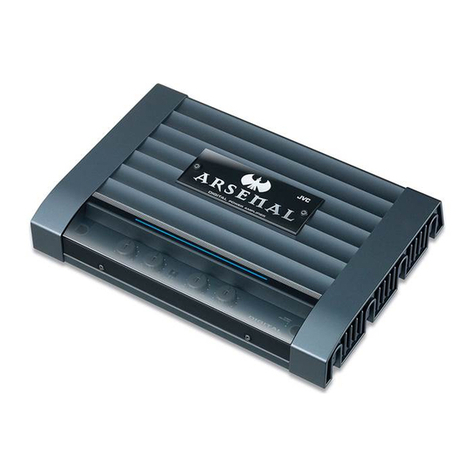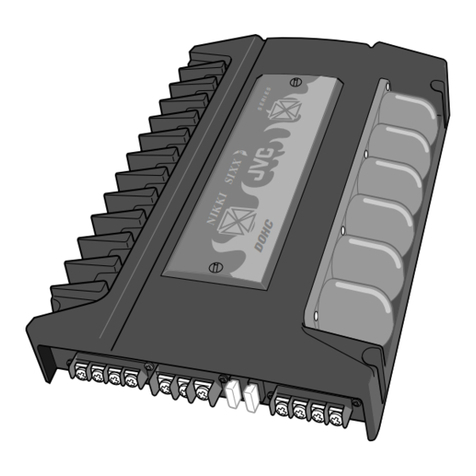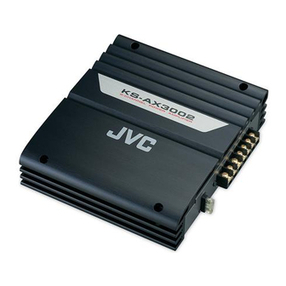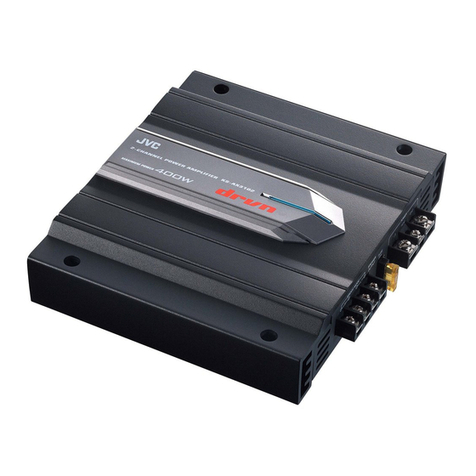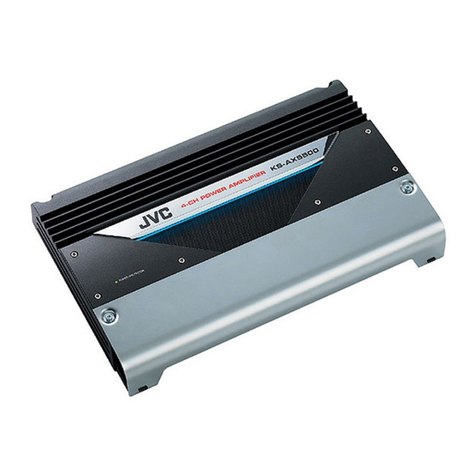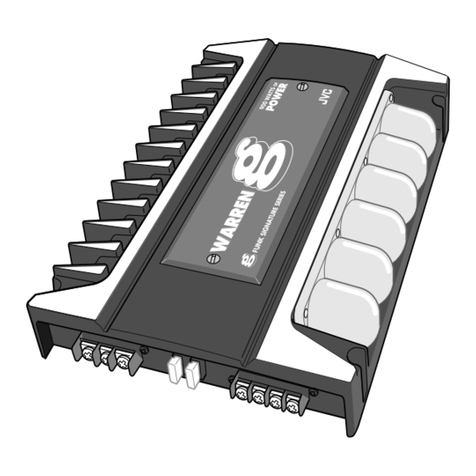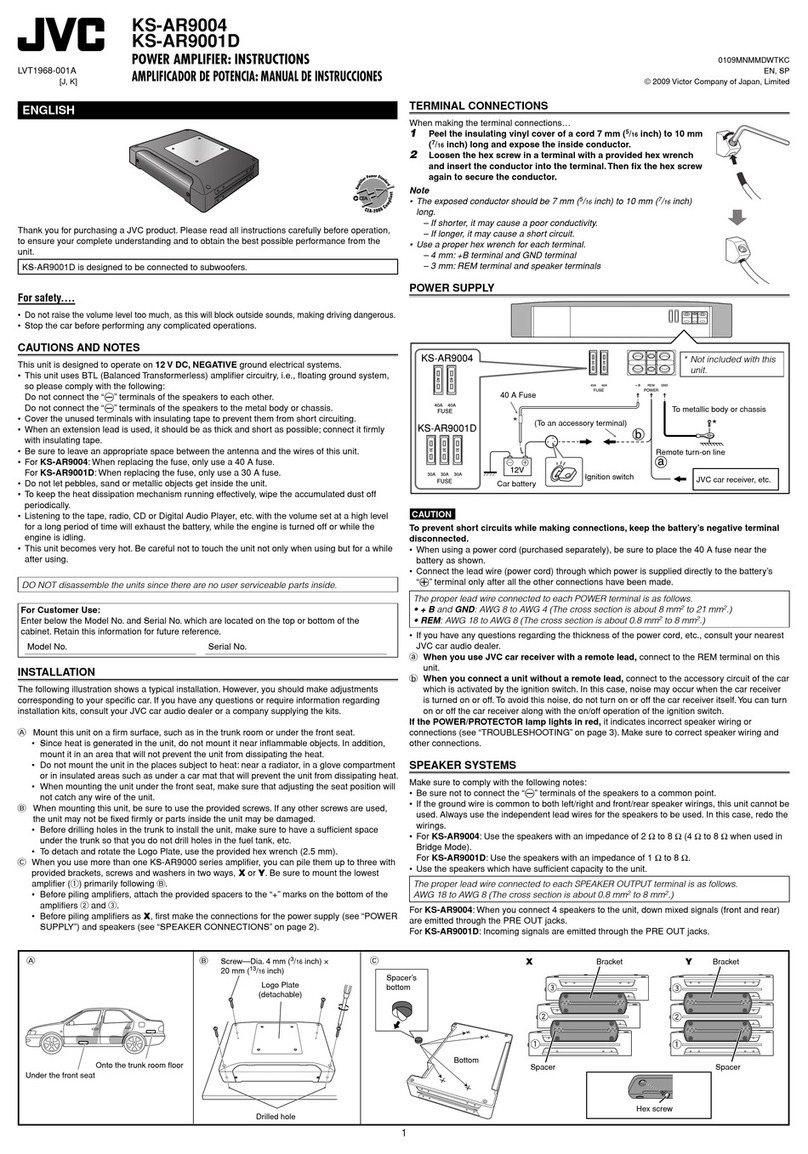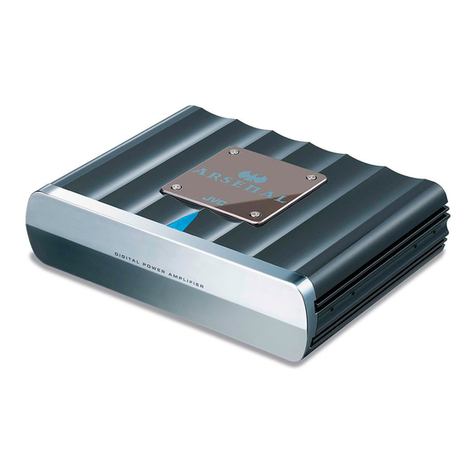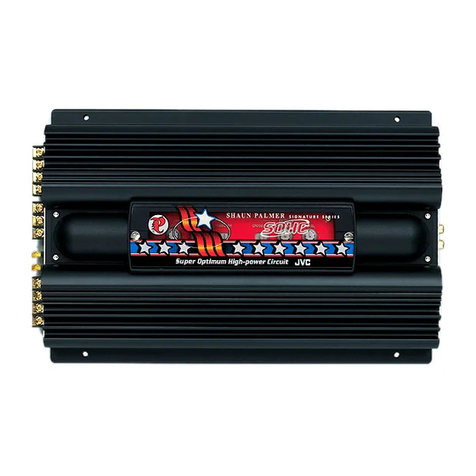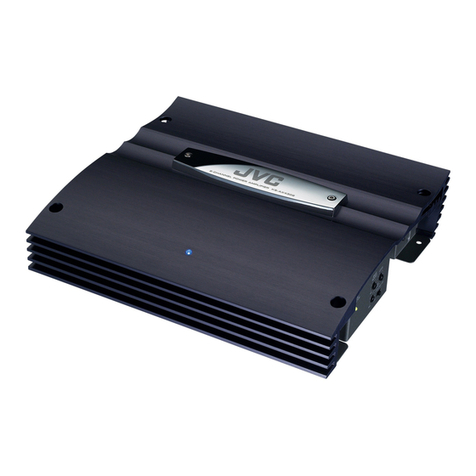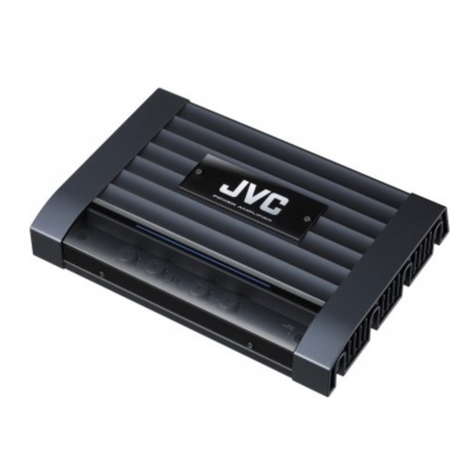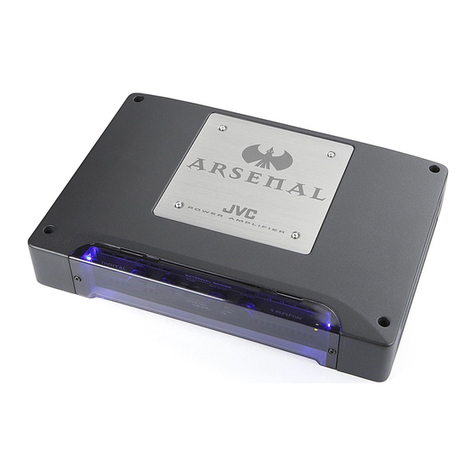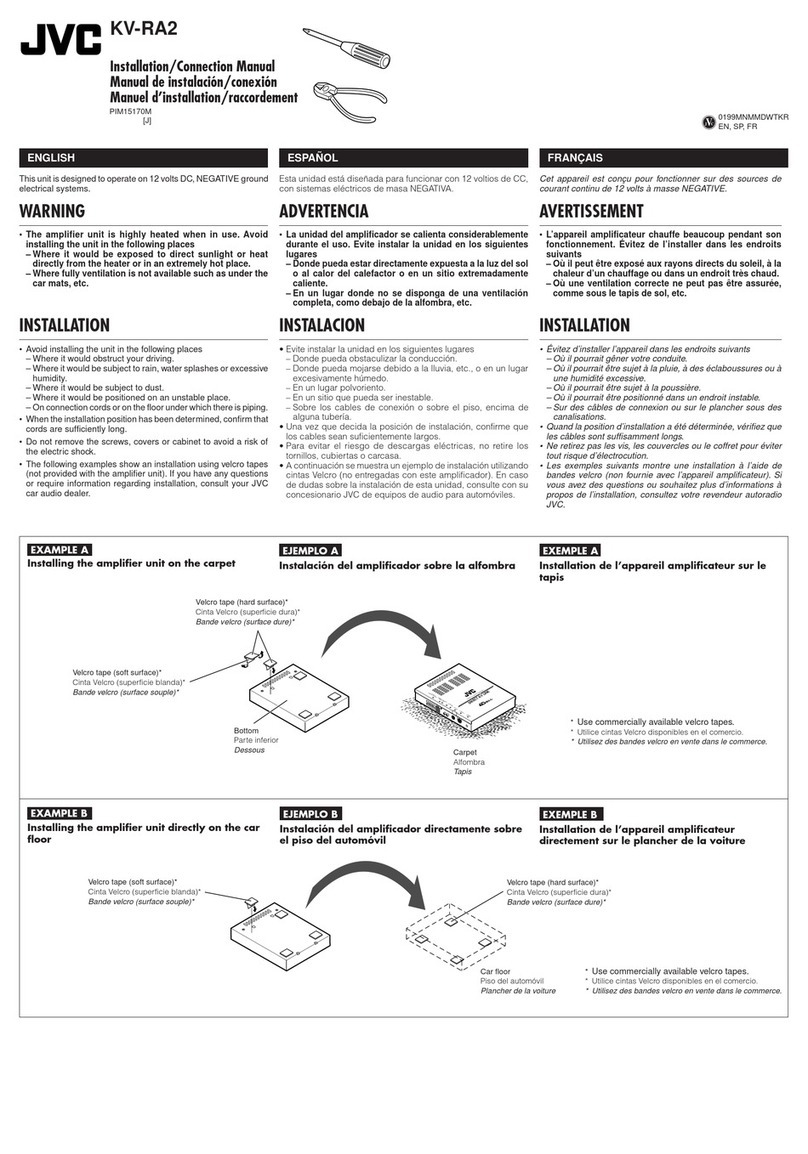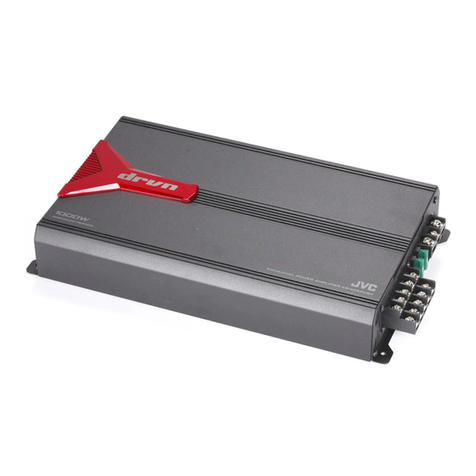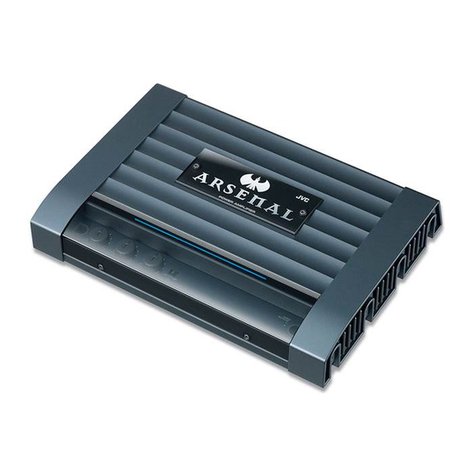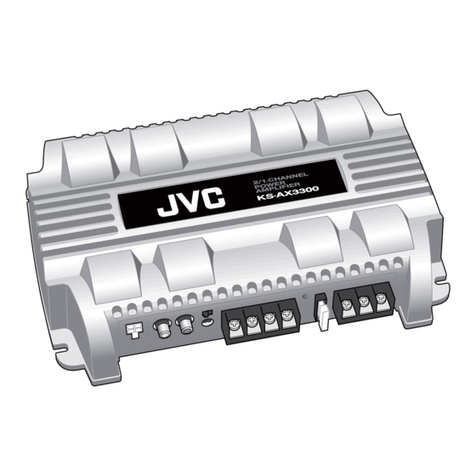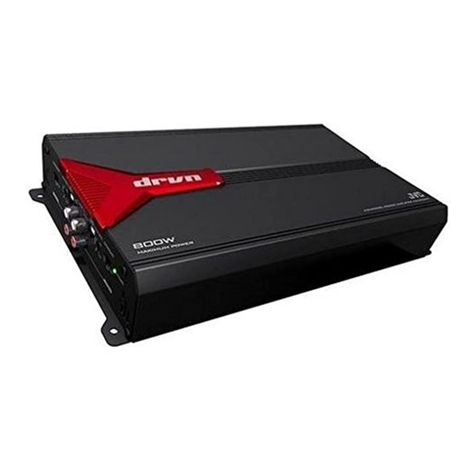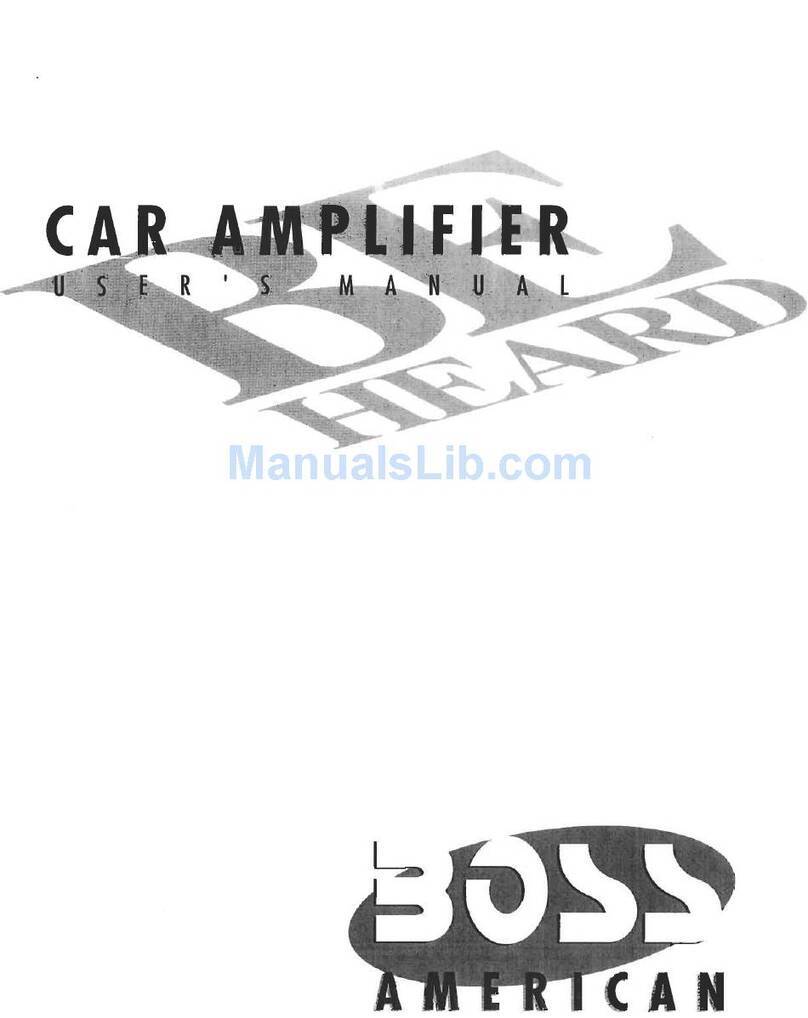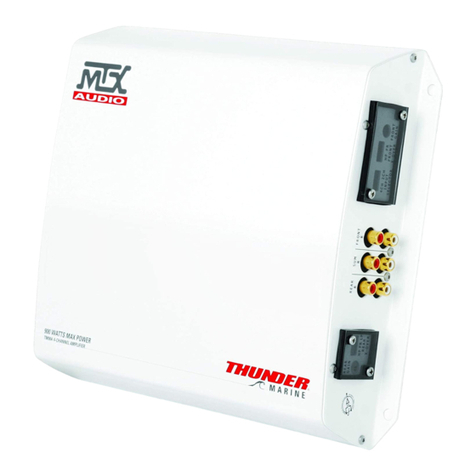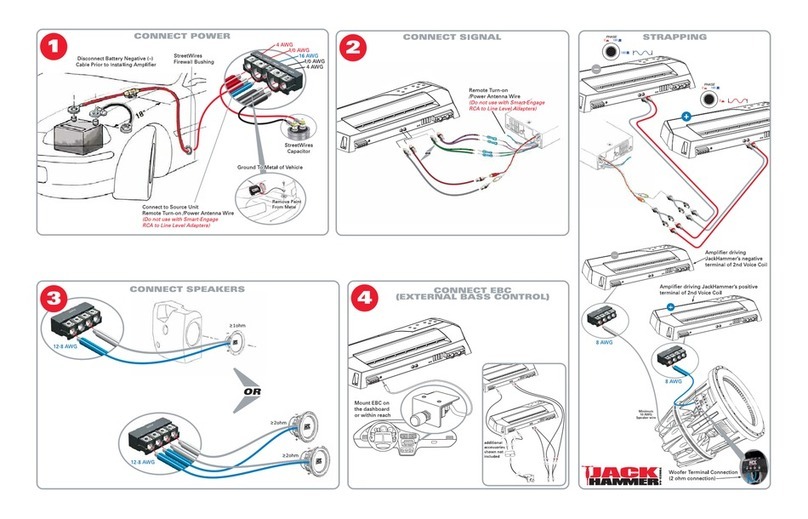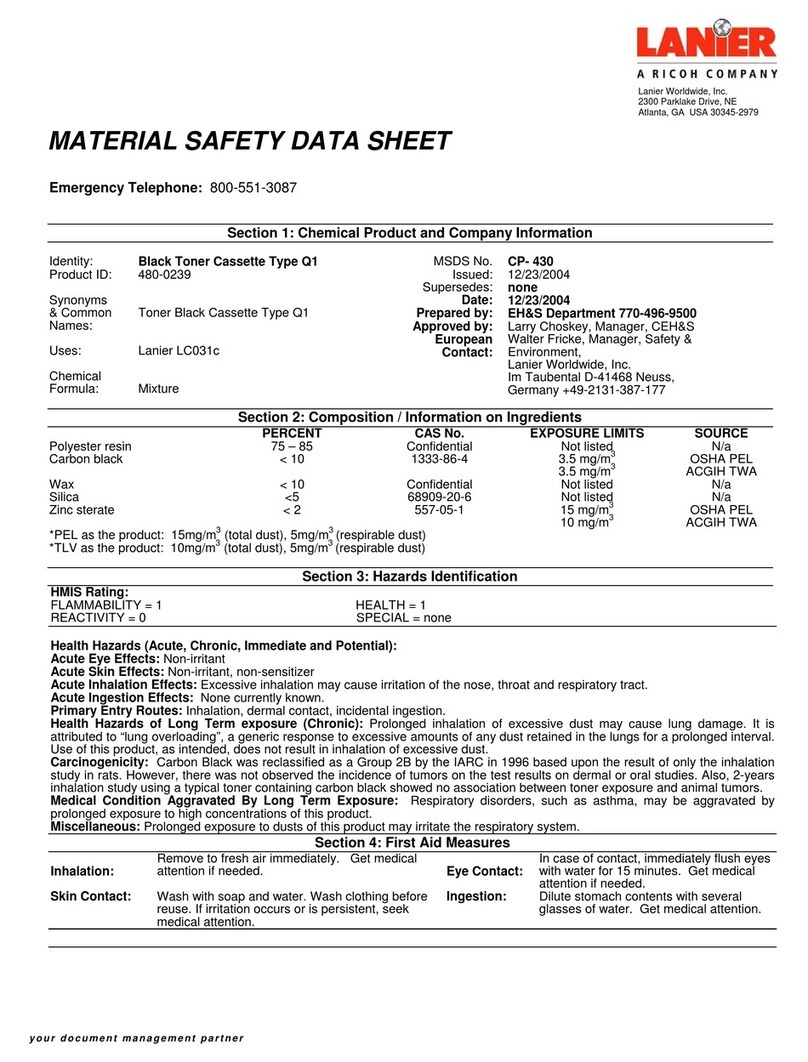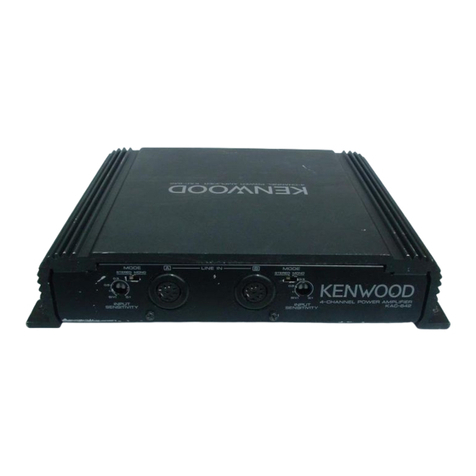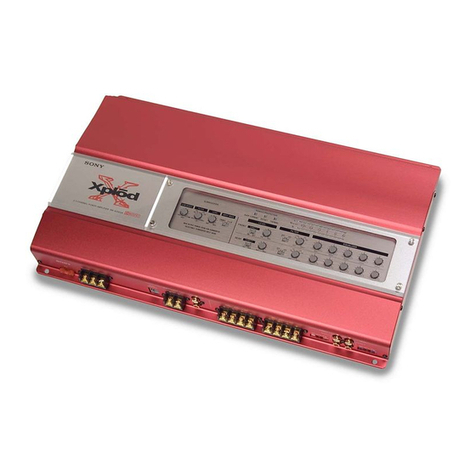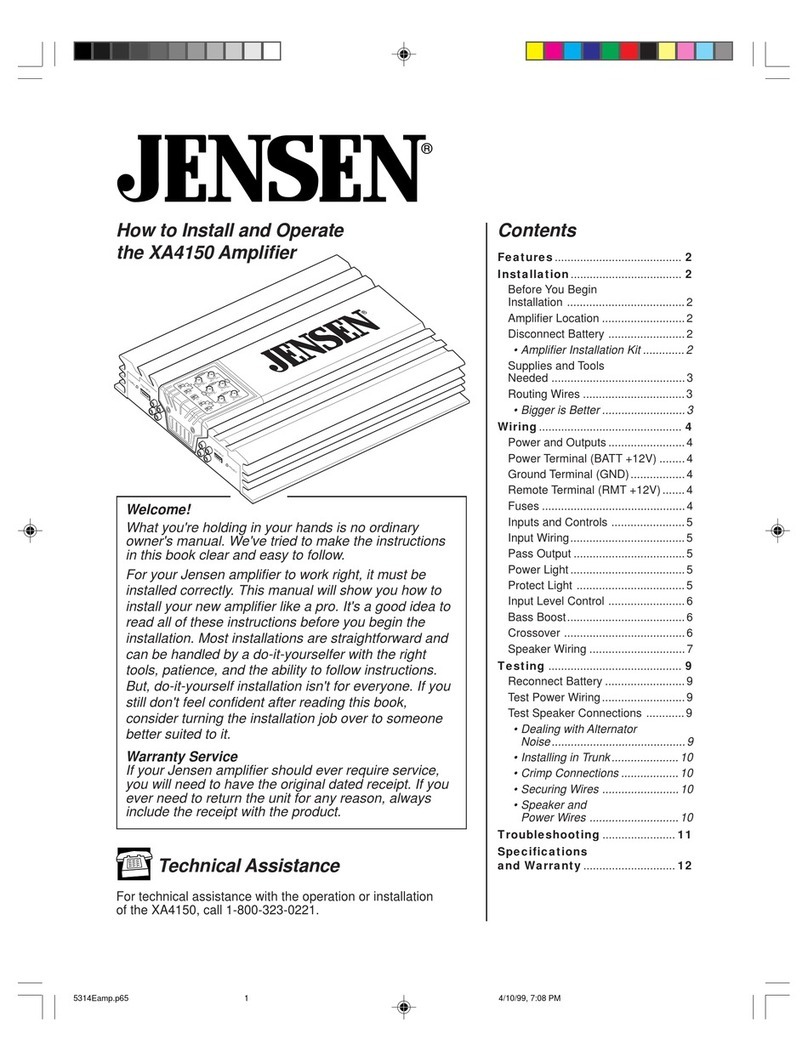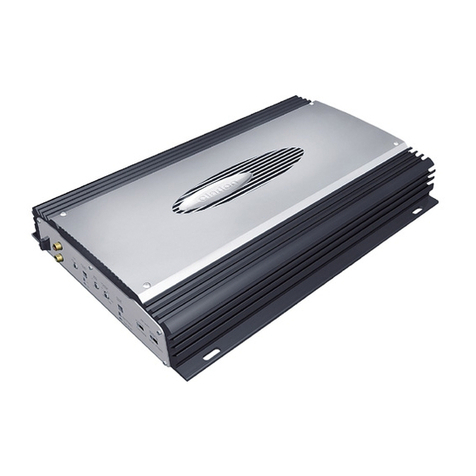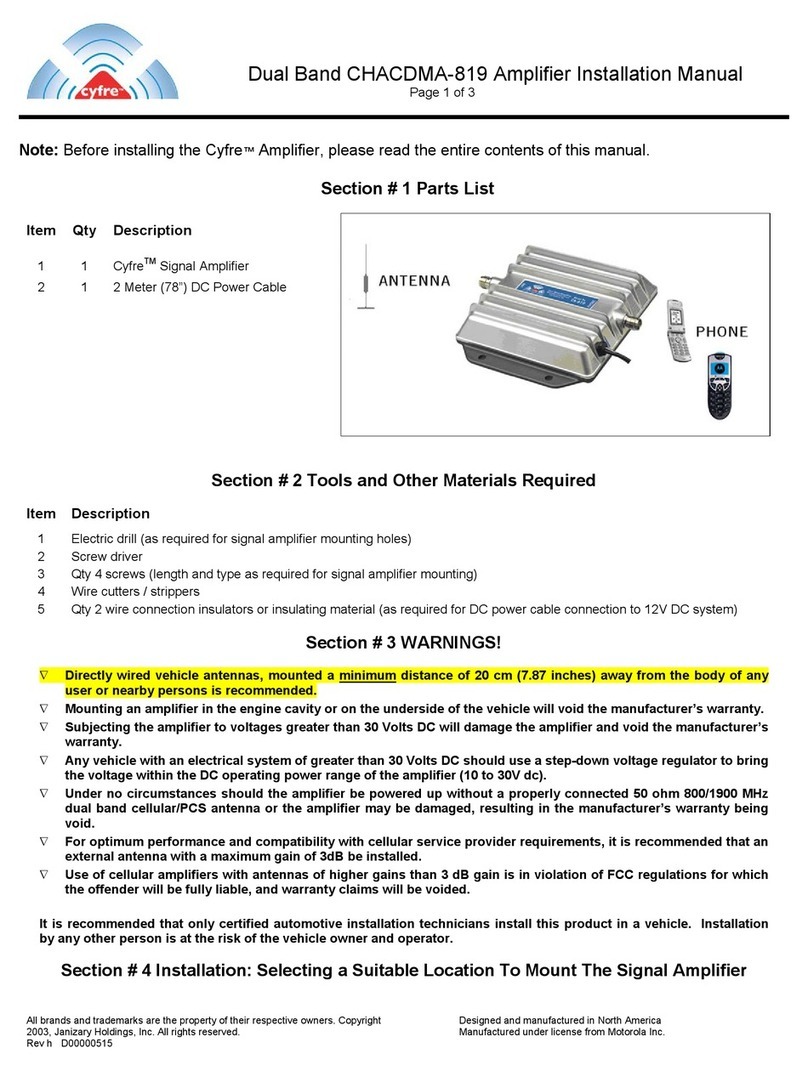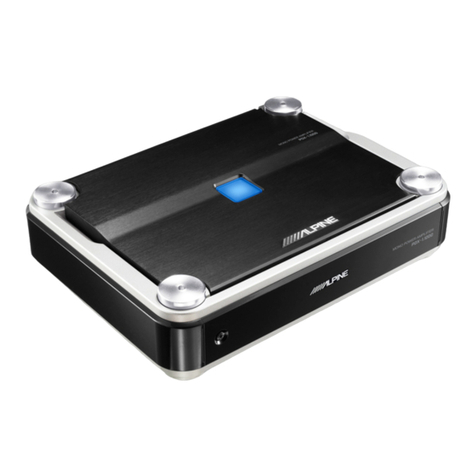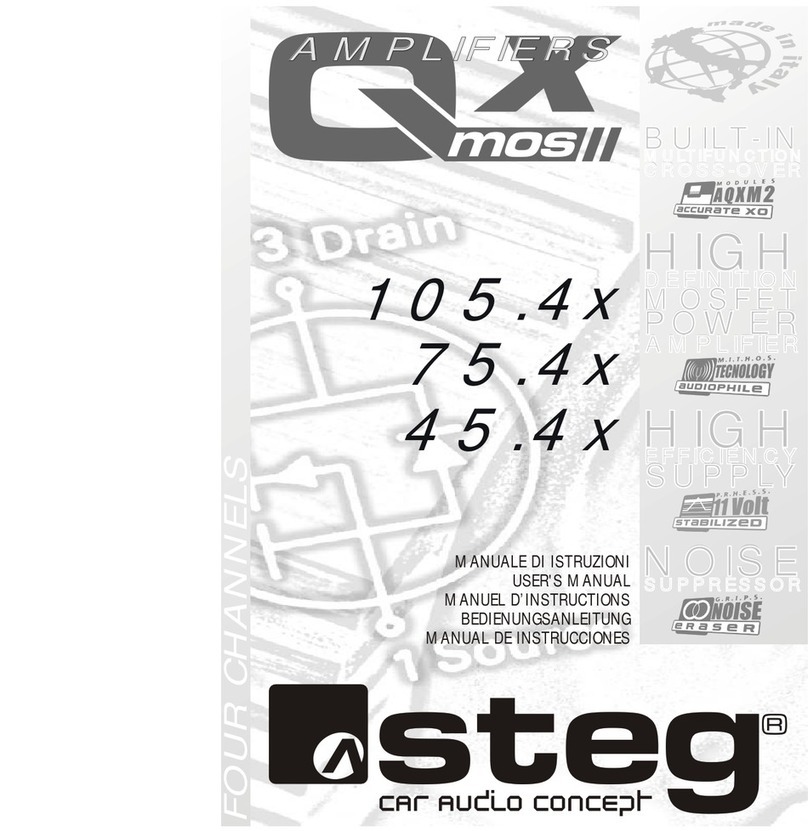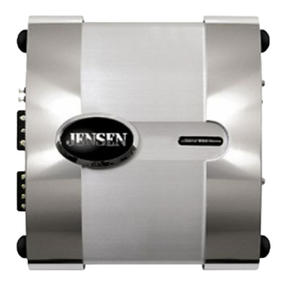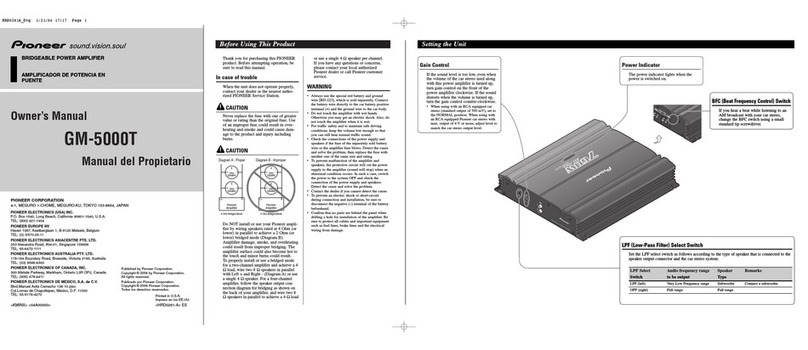1
KS-AR8001D
POWER AMPLIFIER: INSTRUCTIONS
AMPLIFICATEUR DE PUISSANCE: MANUEL D’INSTRUCTIONS
ENGLISH
INSTALLATION
The following illustration shows a typical installation. However, you should make adjustments
corresponding to your specific car. If you have any questions or require information regarding
installation kits, consult your JVC car audio dealer or a company supplying the kits.
CAUTION
To prevent short circuits while making connections, keep the battery’s negative terminal
disconnected.
1Remote turn-on line (not included with this unit)
aWhen you use a JVC car receiver with a remote lead, connect to the remote lead.
bWhen you connect a unit without a remote lead, connect to the accessory circuit of the
car which is activated by the ignition switch. In this case, noise may occur when the car
receiver is turned on or off. To avoid this noise, do not turn on or off the car receiver itself.
You can turn on or off the car receiver along with the on/off operation of the ignition switch.
2Ground lead (not included with this unit)
3Power cord (not included with this unit)
• When using a power cord, be sure to add a 40 A fuse near the battery as shown.
• Connect to the battery’s “ª” terminal only after all the other connections have been made.
If the Status lamp (see “CONTROLS” on page 3) lights in red, it indicates incorrect speaker
wiring or connections. In this case, see “TROUBLESHOOTING” on page 3. Be sure to correct the
speaker wiring and other connections.
POWER SUPPLY
LVT1811-001A
[J]
Thank you for purchasing an ARSENAL product. Please read all instructions carefully before
operation, to ensure your complete understanding and to obtain the best possible performance
from the unit.
For safety....
•
Do not raise the volume level too much, as this will block outside sounds, making driving dangerous.
• Stop the car before performing any complicated operations.
CAUTIONS AND NOTES
This unit is designed to operate on 12 V DC, NEGATIVE ground electrical systems.
• This unit uses BTL (Balanced Transformerless) amplifier circuitry, i.e., floating ground system,
so comply with the following:
Do not connect the “·” terminals of the speakers to each other.
Do not connect the “·” terminals of the speakers to the metal body or chassis.
• Cover the unused terminals with insulating tape to prevent them from short circuiting.
• When an extension lead is used, it should be as thick and short as possible; connect it firmly
with insulating tape.
• Be sure to leave an appropriate space between the antenna and the wires of this unit.
• When replacing the fuse, only use a 25 A fuse.
• Do not let pebbles, sand or metallic objects get inside the unit.
• To keep the heat dissipation mechanism running effectively, wipe the accumulated dust off periodically.
• Listening to the tape, radio, CD or Digital Audio Player, etc. with the volume set at a high level
for a long period of time will exhaust the battery, while the engine is turned off or while the
engine is idling.
• This unit becomes very hot. Be careful not to touch the unit not only when using but for a while
after using.
DO NOT disassemble the units since there are no user serviceable parts inside.
Bracket (I)
Spacer
Spacer
Bottom
When mounting this unit, be sure to use the provided screws. If any other screws are used,
there is a risk of loosening the unit or damaging parts inside it.
•Before drilling holes in the trunk to install the unit, make sure that there is a sufficient
space under the trunk so that you do not drill holes in the fuel tank, etc.
•To detach and rotate the Logo Plate, use the provided hex wrench (3 mm).
When you use more than one KS-AR8000 series amplifier, you can pile up to three of
them using the provided brackets and hex screws in two ways, Xor Y.
1 Attach the provided spacers to the bottom of the amplifier (2and 3).
2Fix the amplifiers on both sides with the brackets (I) as illustrated.
• Be sure to mount the lowest amplifier (1) as illustrated on .
• Before piling amplifiers as X, first make the connections for the power supply (see
“POWER SUPPLY” below) and speakers (see “SPEAKER CONNECTIONS” on page 2).
X
Mount this unit on a firm surface, such as in the trunk or under the front seat.
•Since heat is generated in the unit, do not mount it near inflammable objects. In addition,
mount it in an area that will not prevent the unit from dissipating the heat.
•Do not mount the unit in the places subject to heat: near a radiator, in a glove compartment
or in insulated areas such as under a car mat that will prevent the unit from dissipating
heat.
•When mounting the unit under the front seat, make sure that adjusting the seat position
will not catch any wire of the unit.
Under the front seat Onto the trunk floor
Bracket (I)
Bracket (L)Bracket (L)
Serial No.Model No.
For Customer Use:
Enter below the Model No. and Serial No. which are located on the top or bottom of the
cabinet. Retain this information for future reference.
*Not included with this unit.
To metallic body or chassis
(To an accessory terminal)
Fuse
Car battery
Ignition switch
Spacer's bottom
Logo Plate (detachable)
Drilled hole
Bracket (L)
Hex Screw (M4 × 7/16 inch (10 mm))
Screw (Dia. 3/16 inch (4 mm)
× 13/16 inch (20 mm))Bracket (L)
Y
This unit is designed to be connected to subwoofers.
Note
Side of the unit
JVC car receiver, etc.
TERMINAL CONNECTIONS
1 Peel off the insulating vinyl cover of a lead to expose the conductor
inside.
• The exposed conductor should be 5/16 inch (7 mm) to 7/16 inch
(10 mm) long.
– If shorter, it may cause poor conductivity.
– If longer, it may cause a short circuit.
2Loosen the hex screw in a terminal with the provided hex wrench
and insert the conductor into the terminal.
• Use the appropriate hex wrench for each terminal.
– 4 mm: +B and GND terminals
– 3 mm: REM and SPEAKER OUTPUT terminals
3Fix the hex screw again to secure the conductor.
The appropriate wire gauge for each terminal is as follows.
• POWER terminals:
–+Band GND: AWG 8 to AWG 4 (The cross section is about 8 mm2to 21 mm2.)
–REM: AWG 18 to AWG 8 (The cross section is about 0.8 mm2to 8 mm2.)
• SPEAKER OUTPUT terminals:
– AWG 18 to AWG 8 (The cross section is about 0.8 mm2to 8 mm2.)
If you have any questions regarding the thickness of the power cord, etc., consult your nearest
JVC car audio dealer.
Remote turn-on line


